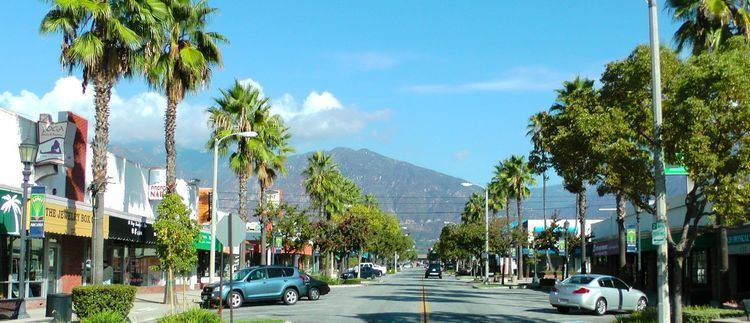Arcadia is a city in Los Angeles County, California, United States, located about 13 miles (21 km) northeast of downtown Los Angeles in the San Gabriel Valley and at the base of the San Gabriel Mountains. Take a look below for 25 interesting and amazing facts about Arcadia, California, United States.
1. It contains a series of adjacent parks consisting of the Santa Anita Park racetrack, the Los Angeles County Arboretum and Botanic Garden, and Arcadia County Park.
2. The city had a population of 56,364 at the 2010 census, up from 53,248 at the 2000 census.
3. The city is named after Arcadia, Greece.
4. For over 8,000 years, the site of Arcadia was part of the homeland of the Tongva people (“Gabrieliño” tribe), a Californian Native American tribe whose territory spanned the greater Los Angeles Basin, and the San Gabriel and San Fernando Valleys.
5. Their fluid borders stretched between the Santa Susana Mountains, San Bernardino Mountains, and San Gabriel Mountains in the north; the Santa Monica Mountains and Simi Hills in the west; the San Jacinto Mountains and Santa Ana Mountains in the east; and the coast and Catalina Island (Pimu) in the south.
6. A Tongva settlement site within present-day Arcadia was known as Alyeupkigna (or Aluupkenga).
7. The town’s site became part of the Spanish Mission San Gabriel Arcángel lands in 1771.
8. After Indian Reductions to become Mission Indians, the Tongva were known as the Gabrieliños after the Mission’s name. and under whose control these people worked during the mission period in California.
9. Currently there are 1,700 people self-identifying as members of the Tongva or Gabrieliño tribe.
10. The Mexican land grant for Rancho Santa Anita was issued to Perfecto Hugo Reid and his Tongva wife, Victoria Bartolomea Comicrabit, in 1845.
11. It was named after a family relation, Anita Cota, on his wife’s side. Reid documented the Gabrieliño Native Americans in a series of letters written in 1852, and served as a delegate to the 1849 California Constitutional Convention.
12. In 1847, Reid sold Rancho Santa Anita to his Rancho Azusa neighbor, Henry Dalton.
13. The rancho changed owners several times before being acquired by Gold Rush immigrant, businessman, and major regional land owner Elias Jackson “Lucky” Baldwin in 1875.
14. Baldwin purchased 8,000 acres (32 km2) of Rancho Santa Anita for $200,000. Upon seeing the area, he gasped “By Gads! This is paradise!” Upon buying the land, Baldwin chose to make the area his home and immediately started erecting buildings and cultivating the land for farming, orchards, and ranches.
15. Baldwin built the Queen Anne Cottage for his fourth wife and himself in 1885–1886, now preserved within the Arboretum.
16. In 1885, the main line of the Los Angeles and San Gabriel Valley Railroad, in which Baldwin was a stockholder, was opened through the ranch, making subdivision of part of the land into a town site practical. Later, this rail line became a Santa Fe Railroad line.
17. In 1889, on a site just north of the corner of First Avenue and St. Joseph Street, adjacent to the Santa Fe tracks, Baldwin opened the 35-room Hotel Oakwood to be the centerpiece of his new town. In 1890, the extant Rancho Santa Anita Depot was built.
18. By the turn of the 20th century, Arcadia had a population nearing 500 and an economy that was coming to be based on entertainment, sporting, hospitality, and gambling opportunities, the latter including an early version of the Santa Anita race track.
19. Baldwin oversaw the incorporation of Arcadia into a city in 1903, and was its first mayor.
20. In 1913 Anita Baldwin, Lucky’s daughter, built a 50-room mansion on 19 acres (77,000 m2) of the Baldwin Ranch she inherited from him, and named it “Anoakia” (a portmanteau of Anita and oak).
21. The 17,000-square-foot (1,600 m2) residence was in the Italian Renaissance Revival style, with murals by Maynard Dixon.
22. The estate had a significant Greek Revival-style colonnaded “Parthenon” bathhouse/gymnasium beside a large pool, an apiary and aviaries, kennels and stables, tennis courts and pergolas, and preserved the native oak woodlands.
23. After her death in 1939 the estate became the Anoakia School for Girls, which became the coeducational Anoakia School in 1967, then moved to Duarte in 1990 as the Anita Oaks School.
24. The school owner’s efforts to develop the property into a village of homes with the old mansion as its centerpiece were rejected by the city. After an extended debate, with local citizens and regional preservationists efforts to preserve the historic main house, the city council voted to approve demolition for a real estate development by new owners in 1999.
25. The “Anoakia” mansion, all other significant estate structures and outbuildings, garden features, and numerous California sycamore and Coast live oak trees were demolished for 31 luxury home sites in 2000.




